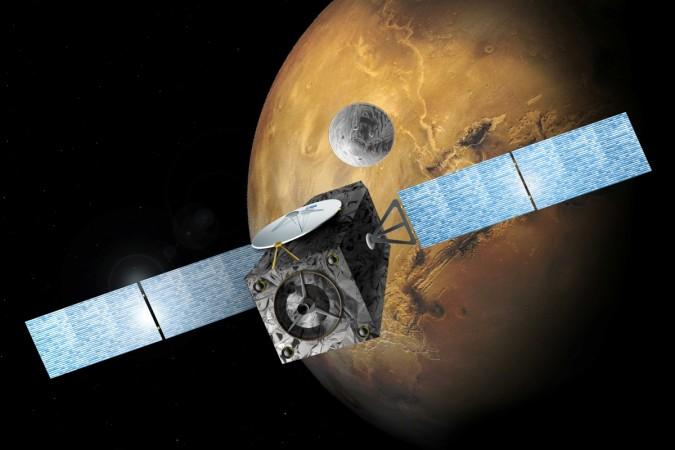
Schiaparelli EDM lander, which was sent to Mars on Europe's ExoMars 2016 mission, has stopped sending radio signals after touch down on the Red planet's surface on Wednesday, October 19.
ExoMars (Exobiology on Mars) is a two-part Martian astrobiology life searching project and a joint mission of the European Space Agency (ESA) and Russian Federal Space Agency (RFSA).
Currently, the ground controllers are waiting for more updates on the status of the lander. India was the last country to receive signals from the spacecraft.
Scientists are assuming that the spacecraft landed on Mars' surface, but could not bear the impact.
The Schiaparelli lander was scheduled to land on Mars' thin and scorching atmosphere at 1448 GMT (8.18 pm IST) on Wednesday. The landing of the craft was confirmed by the ESA, which was followed by absence of radio signal.
Schiaparelli was well set for a safe landing on Mars' surface:
- The researchers had taken steps like equipping the craft with an "aeroshell" shield, which is heat-protective and could be discarded, to prevent the craft from getting damaged from the extreme temperatures caused by the atmospheric drag.
- The craft would have to survive in temperatures more than 1,500 degrees Celsius (2,730 degrees Fahrenheit) on entering Mars' atmosphere.
- To make sure this paddling pool-sized spacecraft landed safely, nine thrusters and a parachute were installed along with a breakable structure at its bottom to provide a cushion-like effect on landing.
"The lander touched down, that is certain," ESA's Schiaparelli manager Thierry Blancquaert told AFP.
"Whether it landed intact, whether it hit a rock or a crater or whether it simply cannot communicate, that I don't know," he added from the mission control in Darmstadt, Germany.
More than half of the missions to operate craft on the Martian surface and explore it have been unsuccessful since the 1960s. This would be the second failure for Europe after the first unsuccessful attempt in 2003.
In 200, Europe's mission landed on Mars, but didn't work. The key reason behind this was the missing of British-built Beagle 2 robot lab after being dispatched from mothership Mars Express. Last year, the ruins of the missing spacecraft was found and photographed by NASA.
The Schiaparelli lander covered a distance of 496 million kilometres over a span of seven months on the European-Russian Trace Gas Orbiter (TGO) to reach a few million kilometres away from Mars on Sunday, from where it started its own mission to land on the Red planet's surface. The mission was successful till the TGO entered Mars' orbit
Despite the consecutive failures for Europe, the ESA officials are trying to be positive and learn from the errors that occurred.
"Experts will work through the night to assess the @ESA_EDM situation," ESA Operations tweeted on Wednesday.
"Whatever is going to happen, we will have learnt a lot of things because we will have data recorded of the descent," spokeswoman Jocelyne Landeau-Constantin told AFP. "So, we already have quite a bit of lessons learnt," she added.
ESA and RFSA are now looking forward to join hands with NASA for exploring the Martian surface.














